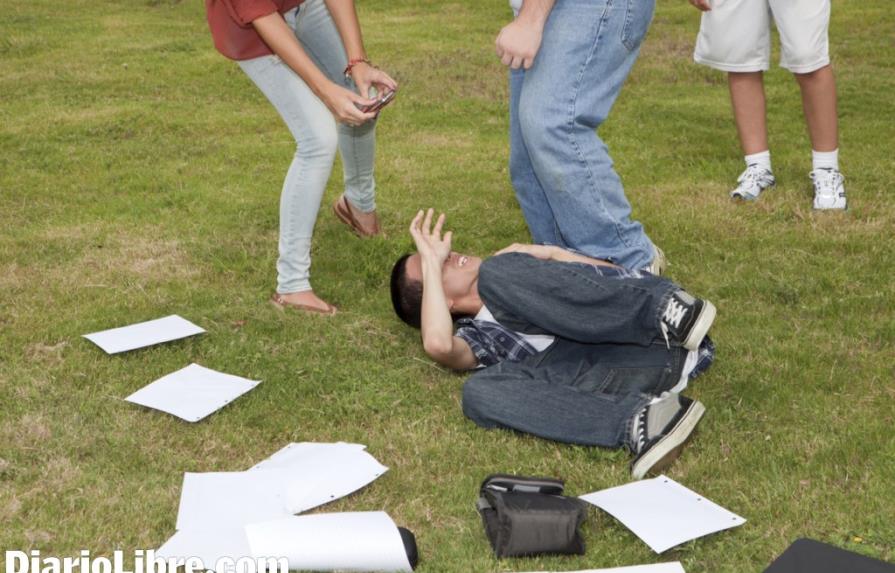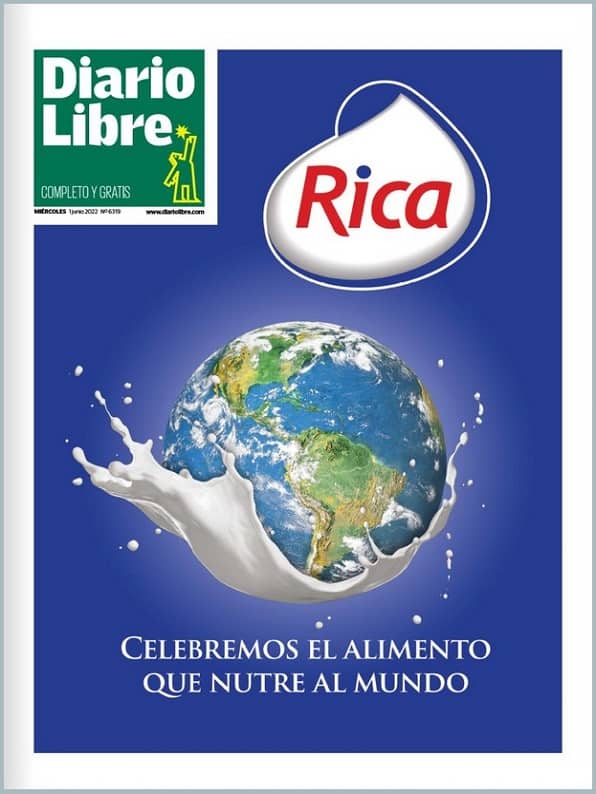Dominican Republic among the countries with most school violence in Latin America
Some 21.8% of students in sixth grade said that they had been the victim of physical violence

SD. "To learn without fear." This slogan used in a world-wide school educational campaign, which supposes that there is a fundamental right for every school, continues to be an ambitious pretention in the Dominican Republic. Here some 60% of the students in primary school confess that they have been the victim of some sort of violence and where 70% of the homes of the parents of tutors use physical or psychological punishment as a method of disciplining children.
The first bit of information comes from the study called "Latin America: Violence among students and school performance," which was done by the Economic Commission for Latin America and the Caribbean (CEPAL) in 2011. The study put the Dominican Republic among the five countries of Latin America with the highest index of physical violence among peers. In the first place is Argentina, with 23.5%,; Ecuador, with 21.9%; Dominican Republic with 21.8%; Costa Rica with 21.2% and Nicaragua with 21.2%.
The study covered students in the sixth grade of primary school in 16 Latin American countries that were consulted about cases of theft, insults of blows that occurred during the last month before the interview.
The country also stands out among the six with the incidence of robberies over 45% and among the five with the greatest percentage of students that stated that they know someone in their class that has suffered mistreatment (bullying) in the school, reaching 70%.
"The student that attend the classrooms with the greatest proportion of robberies or physical or verbal abuse obtain worst grades, both in language as well as in mathematics than those that assist classes where there is less violence," investigators from CEPAL decided. In this sense, they recommend that, although it is not easy for a teacher to recognize the codes and practices of violence among the students, it is necessary to eradicate this evil condition if there is a desire to achieve a good education.
But, how to erase these practices in a country where the violence is a common element in the methods that are used for disciplining children in the majority of the Dominican homes?
The National Multiple Purpose Survey of Households (Enhogar) 2009-2010, indicated that in 67.4% of the homes there is use of physical or psychological punishment for disciplining the children.
Violence of adults on minors is not limited to homes, but rather it is present in the communities and even in the schools themselves, where boys and girls are punished both physically and psychologically as a way of "molding" their "bad" behavior.
Alberto Peralta, the person in charge of Public Policy for the National Council for Children and Adolescence (CONANI), talks about the need to "knock down" the Trujillo-like practices in school discipline. "This thing of putting the children out in the sun, making them kneel down, the specter of the "ruler" or the "flying eraser" still appear to us as cases," he commented.
The issue of "discipline" gets Padilla's attention because he says that the great majority of the boys, girls and adolescents on the streets with which CONANI is working state that although they were in school, they dropped out because, as one said: "I behaved bad and they threw me out."
"A conduct is attacked, or a situation is stigmatized such as the case of an adolescent pregnancy or the behavior of a boy that could be hyper-active, but perhaps he is a boy that has a social behavior as the result of a family that has some dysfunctional issues and which the student (boy or girl) manifests in the school. And what is the cheapest medicine? It seems to be this punishment; "get out of the classroom or out of the school, when what should be done is all the opposite," he commented.
Law 136-03, which creates the Minor's Code, establishes in Article 45 the rights of the boys, girls and adolescents to a quality education.
"A boy or girl has a wall of protection so that they are not at personal or social risk, the family, the community and the school. When you see a child in the streets it is because these three actors have failed, "said Padilla.
The sociologist and national deputy director of the Center for Integrated Attention for Boys, Girls and Adolescents in conflict with the Law, Angel Perez, prefers not to attribute the expulsion to the incidence of children in criminal activities. For him it is an integral part of the family. "Education helps, but being in school is not what determines whether or not the young person commits a crime. The problem is in the values and in the lack of control," he argues.
He points out that of the 462 young people in the center, barely one case corresponds to a young boy who was expelled from school because they found him with a knife. However, he noted that the majority, more than 60% are illiterate, and that it is rare for one of them to have graduated high school.
Expulsion is prohibited
After more than a year of validation and confirmation and consultations with different sectors, the National Educational Council recently approved the "Regulations of the Dominican Educational Systems for the Harmonious Co-existence in the Public and Private Educational Centers."
In its Article 23, the regulations prohibit "any measure the denigrates persons, that is applied in an improvised, indiscriminant or disproportional manner and places the learning process in danger or implies the use of violence."
Among these measures the regulations specify verbal aggression, bodily punishments, collective punishments, economic sanctions, delays or denials of access to the school for the school children. In the following article the law indicates that: "The punishment of expulsion of the student or the urging of his expulsion from the educational center during the school year is prohibited in any case."
The regulations establish a scale of disciplinary issues which varies between slight, serious, and very serious, and authorizes a variety of sanctions that can be applied to the student, whereby the student can be removed from the classroom for no more than an hour, and where he/she is placed in an area outside the classroom, for very serious faults. In both cases the student has to be assigned some work to be done.
Then the fault committed constitutes a criminal act, the Children's and Adolescents Tribunal should be informed, as in the case in which they reported in the Juana Saltitopa School of Los Alcarrizos, where some schoolboys raped a mentally handicapped girl, taped the incident and put it in the social media with their cell phones.
When the minors are involved in gangs, "the Center's Director, together with the Director of the Educational District and the Association of Mother, Fathers and Friends of the School will work out with CONANI and the Prosecutor for Boys, Girls and Adolescents and other protective agencies, how to coordinate activities that generate learning geared to new ways of behaving from the different actors (students, family and community)," says the regulations.


 Diario Libre
Diario Libre
 Diario Libre
Diario Libre